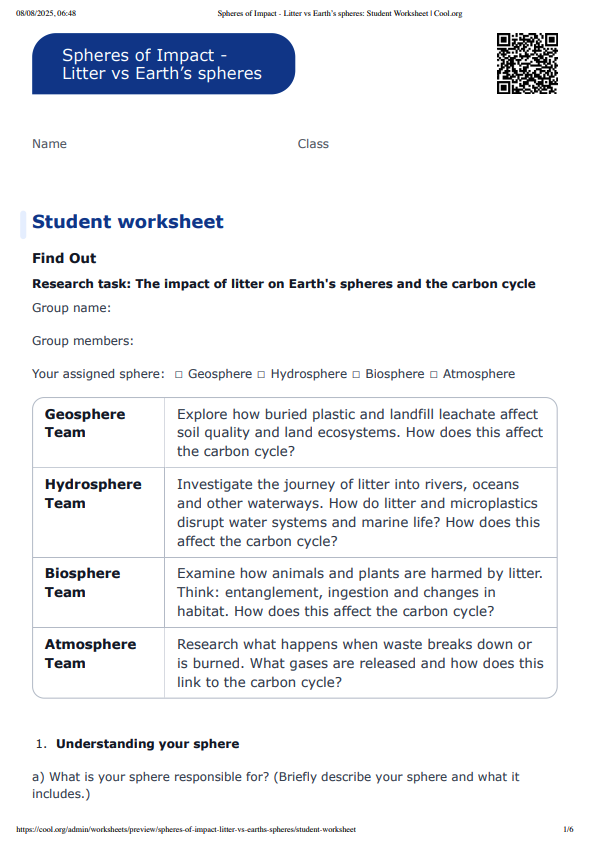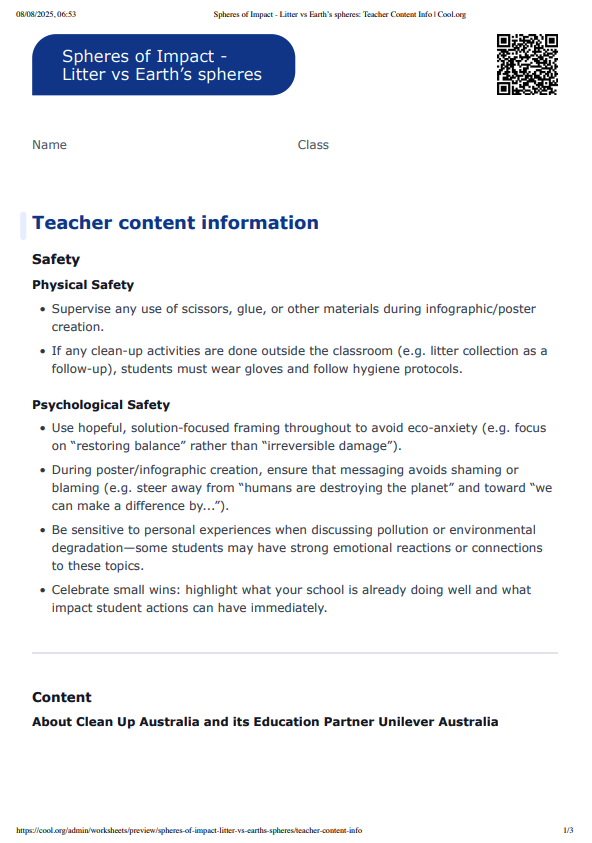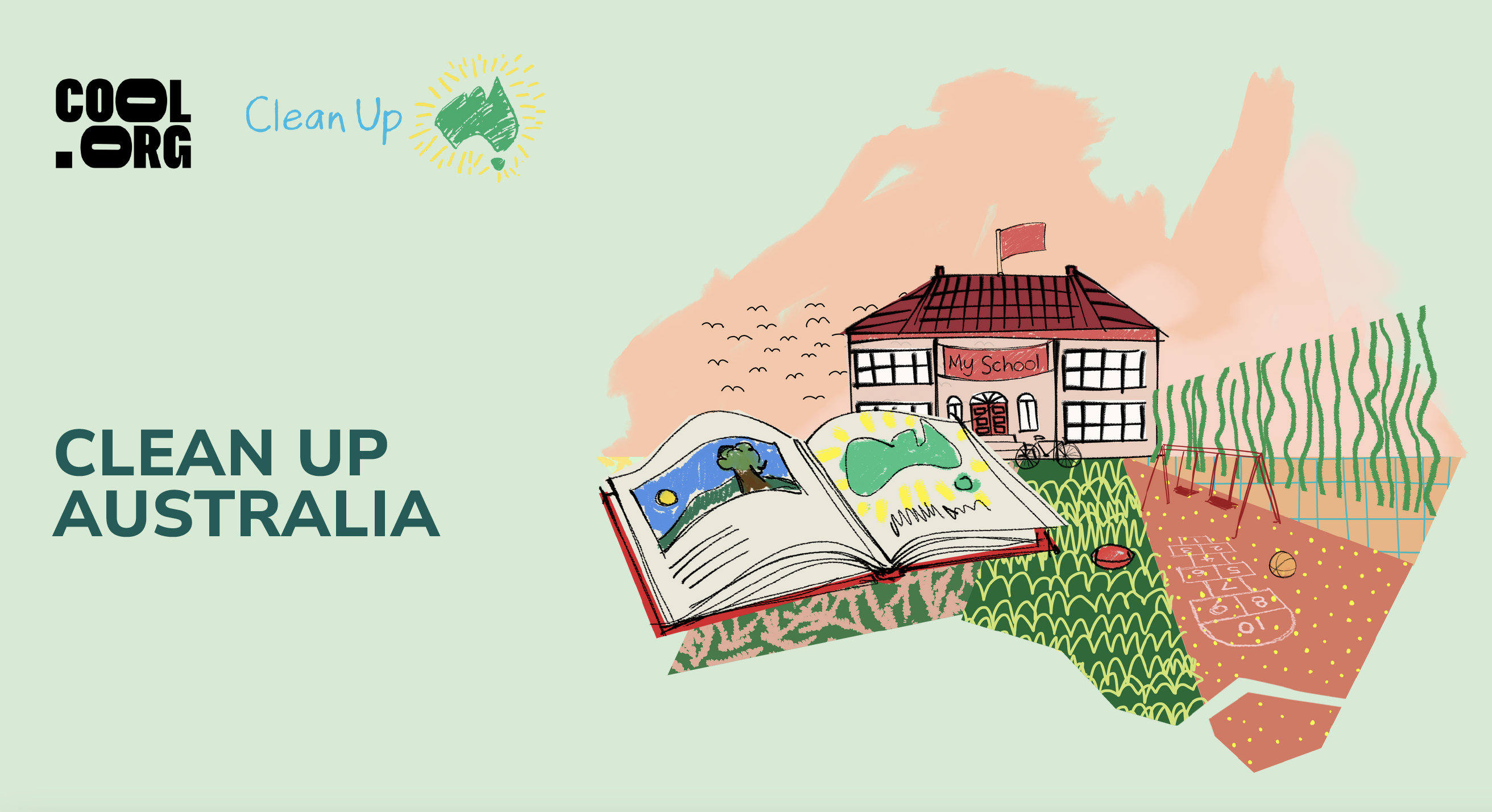Lesson summary
Students will represent the carbon cycle and examine how key processes, including combustion, photosynthesis and respiration, rely on interactions between Earth’s spheres (the geosphere, biosphere, hydrosphere and atmosphere).
These resources are part of the Clean Up Australia Education Resources created in collaboration with Clean Up Australia.
Learning intentions
Students will:
- explore how litter interacts with Earth’s spheres
- analyse the indirect carbon impacts of pollution.
Success criteria
Students can:
- identify which of Earth’s spheres are impacted by different types of litter
- explain how pollution contributes to changes in the carbon cycle.
Lesson guides and printables
Curriculum links
Select your curriculum from the options below.
Lesson details
Skills
This lesson is designed to build students’ competencies in the following skills:
- critical thinking
- collaboration
- communication
- community engagement
Curriculum Mapping
Australian Curriculum (v9.0) content description:
Year 9, Science
- Students learn to represent the carbon cycle and examine how key processes, including combustion, photosynthesis and respiration, rely on interactions between Earth’s spheres (the geosphere, biosphere, hydrosphere and atmosphere) (AC9S9U03).
Relevant parts of Year 9 achievement standards: Students can explain how interactions within and between Earth’s spheres affect the carbon cycle.
NSW Syllabus outcomes:
(Current) A student:
- explains how scientific knowledge about global patterns of geological activity and interactions involving global systems can be used to inform decisions related to contemporary issues (SC5-13ES)
(New) A student:
- Analyses the impact of human activity on the natural world (SC5-ENV-01)
General capabilities: Critical and Creative Thinking
Cross-curriculum priority: Sustainability
Level of teacher scaffolding: Medium – Teachers facilitate discussions, guide rotations, support research, and assist campaign planning. While students work collaboratively, teachers prompt critical thinking, ensure scientific accuracy, and maintain group focus.
UN Sustainable Development Goals
UN SDG 12: Ensure sustainable consumption and production patterns
- Target 12.8: By 2030, ensure that people everywhere have the relevant information and awareness for sustainable development and lifestyles in harmony with nature.
Resources Required
- A3 paper
- Visual Explainer
- Clean Up Australia Litter Prevention Plan
- Device capable of displaying audiovisual material
- Student devices for research
- Student Worksheet
Additional Info
After completing this lesson plan, your school may like to take part in a Clean Up, which can take place on Schools Clean Up Day or any day that suits your school. As part of the Clean Up, asking your class to complete the Litter Report, which is included in your kit materials, will contribute greatly to Clean Up Australia’s data collection efforts. You’ll be joining thousands of amazing teachers in making a difference and creating positive environmental change. For more information on how you can get involved, download The Clean Up Australia Educator's Guide here.
Related Professional Learning
Students, Schools and Eco-Anxiety: Teaching and Learning for Eco-Optimism
Quick Summary: This aligns with our carbon cycle lesson, where students explore how Earth’s systems interact through key processes like combustion and photosynthesis. This PL supports you in guiding students beyond the science, helping them connect the dots between knowledge, systems thinking, and meaningful action.





Welcome back!
Don't have an account yet?
Log in with:
Create your free Cool.org account.
Many of our resources are free, with an option to upgrade to Cool+ for premium content.
Already have an account?
Sign up with:
By signing up you accept Cool.org's Terms and Conditions(Opens in new tab) and Privacy Policy(Opens in new tab).